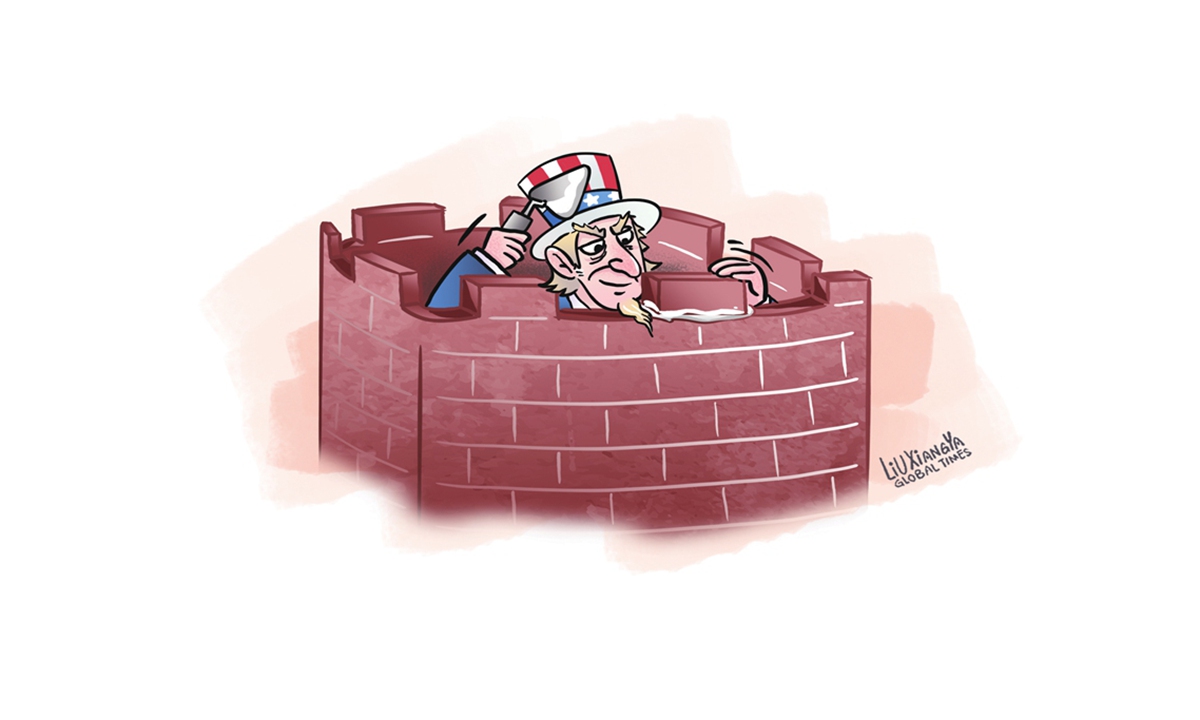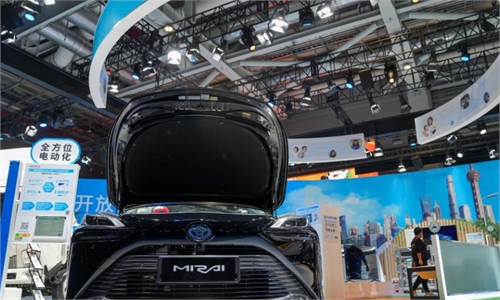Growing ‘high fence’ in US will eventually suffocate people inside the ‘small yard’

Illustration: Liu Xiangya/ GT
"National security" is the most grandiose reason for the US to build a "small yard and high fence" type of trade and industrial protectionism, which has become the "conventional weapon" of the US strategy against China.Now the question is, can the industry inside the high fence be safe and sound to renew the dream of "making America great again"?
Today, China's manufacturing can achieve results in the field of electric vehicles (EV), 5G equipment, drones, as well as many others, and produce the world's most inexpensive and market-oriented industrial products.
The capability we are talking about here is not only the ability to make technological breakthroughs and the ability to fully support production and manufacture on a large scale, but also the ability of the Chinese people. This ability makes it impossible for the US to completely "decouple" from China, and even more impossible to completely replace Chinese manufacturing.
Chinese EVs can be banned, but what about the spare parts, the machines and equipment, and the raw materials to produce them?
Imagine, any piece of Chinese manufacturing, including toys, furniture, instruments, electronic equipment - as long as they are remote-control electronic devices or installed with AI accessories, they may become security issues related to the target of the crackdown.
If the US government insists on blocking Chinese manufacturing as its main policy direction, we can expect that the next administration to be primarily focused on dealing with Made-in-China products. This singular focus will create a self-made vortex that will require a significant amount of energy and taxpayer money to address. Washington will need to design a new industrial system to protect national security, which will be a costly endeavor.
Curbing the entry of Chinese products into the US market has already proven to be expensive for the US government. The replacement of Huawei and ZTE equipment in rural and remote areas, where these products were prevalent, was a significant financial burden.
The Federal Communications Commission has established a $9 billion fund to expand 5G mobile broadband service to rural areas in the country. But to this day, most of that money is still floating in the air, while Huawei and ZTE have long started to work on 6G products.
The list of Made-in-China products to be blocked in the US continues to grow, including EVs, drones, Xinjiang cotton, cargo handling equipment.
While it is possible for US companies to manufacture these products, they may not be able to do so as cheaply or with the same level of quality as Chinese manufacturers.
For example, according to the Association for Uncrewed Vehicle Systems International, Chinese drones dominate more than 90 percent of the US consumer market, 70 percent of the enterprise market and 92 percent of the first responder market. It raises the question of which US company is capable of replacing Chinese drone manufacturers in terms of market dominance and quality.
It is accurate to say that Washington, while recognizing China's ability to make high-end breakthroughs, underestimated the ability of the Chinese people, specifically the explosive power of the combination of their ability and market stimulus.
Today, China's auto market is the world's most competitive. Any auto company that can succeed in the Chinese market must be able to succeed in any market worldwide. This is the inevitable result of globalization and the law of world economic development.
In a small yard with a high fence, there's a limit to how high the fence can be built. If the fence continues to grow higher, the yard will become relatively smaller and smaller, potentially suffocating the people inside.


